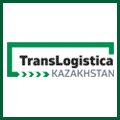The Port of Hamburg remained on a growth curve in the first quarter of 2012
2012 05 16
- Details
In the first three months of 2012 the Port of Hamburg achieved total throughput of 32.6 million tons (+ 3.8 percent). At 2.2 million TEU (20-ft standard containers), throughput on the container handling that predominates in Hamburg as a universal port was 5.2 percent higher than in the first quarter of 2011. Compared to the main ports further West, Hamburg thus gained additional market share and strengthened its position as the Northern European hub for container traffic; Rotterdam’s throughput was down by 3.9 percent, while Antwerp’s increase was comparatively minimal at 0.7 percent.
In the first quarter of 2012 total seaborne cargo throughput in Germany’s largest universal port reached a volume of 32.6 million tons (+ 3.8 percent). The Port of Hamburg performed especially strongly on general cargo throughput and managed a positive result on overall throughput despite some downturns in the bulk goods area.
By comparison with the first quarter of 2011, on general cargo throughput the Port of Hamburg achieved a 7.9 percent advance to 23.1 million tons. Growth here was primarily powered by the strong trend in exports of containerized general cargoes. Here the Port of Hamburg handled export volume of 11.4 million tons in the first three months of the year, representing an increase of 11.1 percent. Europe‘s second largest container port also performed well on imports of containerized general cargoes, with volume of 11.2 million tons representing 5.5 percent growth.
“We are delighted that with a 5.2 percent rise in container throughput in the first quarter, the Port of Hamburg is markedly ahead of the 2.4 percent average growth for the four major ports in the North Range,” comments Claudia Roller, CEO of Port of Hamburg Marketing: “The excellent result in this segment is what triggered the Port of Hamburg’s overall growth in the first quarter of 2012. For the remainder of the year we are reckoning on a further increase in total throughput.”
“We are headed in the right direction and have gained notable market shares. This is indicative for competitiveness of the Port of Hamburg”, stresses Jens Meier, HPA managing director. “Considering container handling figures and the market shares in the northern European Ports range the Port of Hamburg even surpasses forecasts of the 2010 ISL potential analysis.”
In the first quarter of 2012 altogether 1.2 million TEU (- 5.0 percent) were handled in seaborne container traffic with Asia. The Port of Hamburg’s marketing organization assumes that the trend in container volumes in the Asia trade has primarily been influenced since the beginning of the year by reductions in capacity and the cessation of some liner services. “Downturns in the Asia trade are a momentary phenomenon caused by restructuring of various liner services. However, we are expecting new East Asia container liner services in the Port of Hamburg in the course of the first half year,” says Claudia Roller.
The trend in container throughput with the Baltic area in the first quarter of 2012 was very positive. Increases were also achieved in the Europe and America trades. Container traffic with the Baltic region achieved a noteworthy increase of 19.6 percent and reached 531,000 TEU. As the easternmost seaport in the North Range, the Port of Hamburg is the most significant foreign trade hub for foreign trade with the Baltic region: a high proportion of the cargoes exchanged between the countries of Northern & Eastern Europe and overseas is routed in the transhipment trade by feedership via the Port of Hamburg. In the Baltic region, Russia and Finland are the Port of Hamburg’s most significant trading partners for seaborne container transport. With around 151 sailings per week, Hamburg continues to offer the densest network anywhere in Northern Europe of feeder links with the entire Baltic region. In addition, new feeder service to the United Kingdom and the Scandinavian countries produced a distinct advance with 41,000 TEU (+ 37.6 percent) and 232,000 TEU (+ 8.1 percent), respectively. Altogether, in the first quarter the Port of Hamburg‘s European container trades grew by 18.4 percent to 694,000 TEU.
With 279,000 TEU, in the first three months the America trade as a whole achieved distinct growth of 33.3 percent. The primary reasons for this were new and extended liner services from Canada via the USA and on to South America. These produced growth in container throughput for the Port of Hamburg. At 55,000 TEU (- 6.2 percent) and 8,000 TEU (- 9.7 percent), respectively, in the first quarter totals for the Africa and Australia/Pacific container trades were both lower.
Bulk cargo throughput in the first quarter of 2012 at 9.5 million tons (- 4.8 percent) was below the previous year‘s. Whereas grab cargo throughput in the first three months of 2012 at 4.8 million tons was 5.0 percent up on 2011, throughput of both liquid and suction cargoes was down. Among grab cargoes, the Port of Hamburg performed especially strongly on ore imports, which were 27 percent higher at 2.3 million tons. First-quarter throughput of liquid cargoes at 3.1 million tons was down by 14.8 percent on the previous year. Downturns in crude oil imports and in both exports and imports of oil products could not be offset by an 11.9 percent advance in throughput of other liquid cargoes on the import side. In the first quarter of 2012 suction cargo throughput at 1.5 million tons remained 9.7 percent below the comparable figure in the previous year. The main reason for this was the lower volume of grain and oil fruit imports, which caused a 10.4 percent downturn in the total quantity imported to 877,000 tons. The remaining suction goods products, mainly feedstuffs, although producing an excellent result with 33 percent growth, did not suffice with total throughput of 60,000 tons to offset the reduced imports of grain and oil fruits. At 637,000 tons, exports of grain and all other suction cargoes were down by 8.7 percent in the first three months.
At 528,000 tons, throughput of non-containerized general cargoes was 6.1 percent lower than in the previous year. One cause of this was the downturn in imports of conventionally stowed citrus fruits (- 39.7 percent) to 74,000 tons. Progressive containerization of general cargo throughput in the Port of Hamburg is the reason for this trend: nowadays a high proportion of the citrus fruit handled here reaches the port in reefer containers. It was primarily vehicle exports that ensured a positive trend in the general cargo area. At 133,000 tons, throughput of these climbed by an impressive 21 percent. With heavy cargoes and project shipments, in the first quarter of 2012 the Port of Hamburg remains on a growth curve, with exports up by 21.8 percent at 142,000 tons and imports 13.6 percent higher at 38,000 tons.
Source Port of Hamburg
The magazine SEA has been published since 1935
International business magazine JŪRA MOPE SEA has been published since 1999
The first magazine in Eurasia in the four languages: English, Chinese, Russian and Lithuanian
|
|




.jpg)






